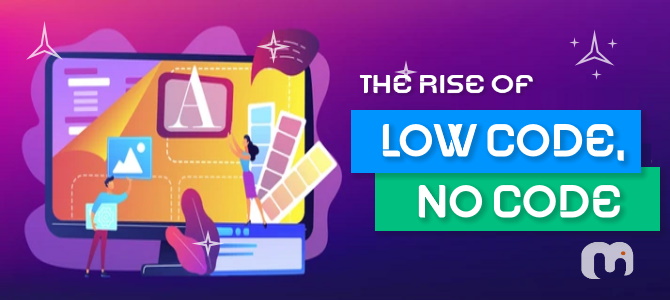
Low-code platforms are becoming more and more ubiquitous. Tech giants are getting into the low-code game, providing platforms to allow pros and amateurs create apps for anything and everything.
Significance of low code platforms
Low code software development platforms allow non-professional developers to create useful business applications. Low-code development is justified by the fact that business users with a good understanding of a business process can contribute to the development of apps. Companies will be able to innovate faster than their competitors by combining the business expertise of business users with the development knowledge of IT teams.
A typical enterprise low code platform would include the components:
- Drag & Drop App Interface capability
- RPA (Robotic Process Automation) for interacting with legacy applications
- Intelligent Data extraction
- Integration and transformation pipelines
- Data storage
- Platform Analytics / Reporting
The Low Code Market
Low code platforms are exciting because they address two of the most significant barriers to digital transformation that organization’s face:
- The inability to develop applications at the speed required by the business.
- Inadequate technical knowledge or skills.
This ability of low code is what has made research analysts be so optimistic about its future growth.
“According to Gartner, low-code will account for 65 percent of all app development by 2024”.
What makes it an attractive value proposition?
Speed: Compared with the traditional software development approach, low-code platforms support faster deployment. They offer simple drag & drop way to build screens and user interfaces. The plug n play capability for rapid prototyping and multi-platform integration capabilities adds to it.
Lower Investments: Low-code platform investments are relatively lower than the traditional development approach which involves modifications to your IT systems / applications. It also reduces the need for more developers, thereby reducing the hiring cost.
Integration Capabilities: Low code applications can assist enterprises in overcoming the challenges of siloed IT systems by integrating data across systems, providing users with a more holistic view of organizational efficiency. A few platforms even include out-of-the-box reporting and analytics, as well as integrated version control systems and one-click merge/publishing.
In the forefront
Microsoft Power Apps and Power Automate leads the way as an immensely rich low-code application development platform to build forms and workflows that can connect to multiple data sources. Power Automate now has more than 400 connectors that developers can use to move data in and out of applications and with a powerful robotic process automation capability.
What sets Power Apps apart is AI Builder, a set of low-code capabilities enabling developers to connect data to natural language processing, image processing, and machine learning. You can train models to categorize and identify entities in text, extract information from forms, identify objects in images, run predictive models and more.
Is low-code the way in future?
Low-code has a role in the future of code and the ability to change the game in terms of business agility, thanks to its relatively straightforward approach to application development. However, it must be thoroughly assessed in the context of a broader business perspective, with adequate consideration about its pros and cons.
Though critics argue that as low-code, no-code usage rises, the need for technical experts would drop – but in reality, I still believe there will always be a place for talented developers to tackle the real-world complexities and technology needs of the modern enterprise platforms. Also when non-technical personnel build applications that touch consumer data, potentially security and governance issues shall arise when such technology is employed by non-technical users.
Hey! What do you think about Low code tools and Business Process Automation? Drop me a note in the comments section below. Bye for now!
